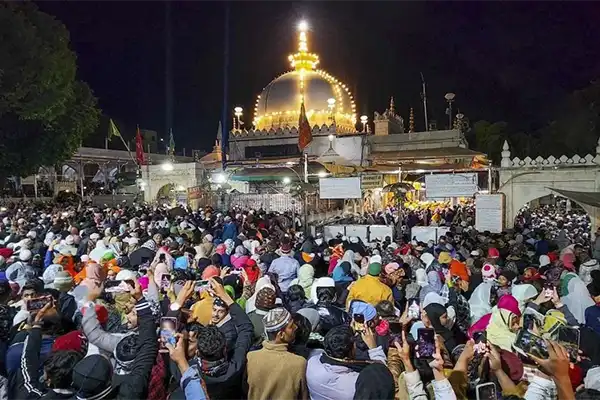Ajmer Sharif Dargah, located in the heart of Ajmer, Rajasthan, is one of the most revered Sufi shrines in India. It is the final resting place of Khwaja Moinuddin Chishti, a 12th-century Sufi saint known for his teachings of love, compassion, and humanity. The dargah attracts millions of devotees, regardless of their religion, who come to seek blessings and spiritual solace.
History and Significance
Khwaja Moinuddin Chishti, also known as Gharib Nawaz (Benefactor of the Poor), was a Persian saint who traveled to India and settled in Ajmer. He propagated Sufism, emphasizing the importance of love and service to humanity. His teachings deeply influenced Indian society, drawing followers from different faiths.
After his passing in 1236 AD, his tomb was built in Ajmer, which gradually became a major pilgrimage site. The Mughal emperors, particularly Emperor Akbar, greatly revered the saint. Akbar is said to have walked barefoot from Agra to Ajmer to seek blessings for an heir. The dargah complex saw significant expansion under Mughal rule, with grand structures and embellishments added over the centuries.
Dargah Complex and Architecture
The Ajmer Sharif Dargah is an architectural marvel, blending Mughal and Indo-Islamic styles. The complex comprises several important structures:
- The Main Shrine: The tomb of Khwaja Moinuddin Chishti is covered with a silver canopy and gold-plated doors. The tomb is enclosed by a marble screen, and devotees offer chadars (sacred cloth), flowers, and prayers.
- Buland Darwaza: A grand gateway built by Sultan Mahmud Khilji in the 15th century, it serves as the main entrance to the dargah.
- Jannati Darwaza: This “Gateway to Paradise” is believed to fulfill the wishes of those who pass through it with pure hearts.
- Shah Jahan’s Mosque: Built by Emperor Shah Jahan, this elegant white marble mosque features intricate calligraphy and beautiful domes.
- Nizam Gate and Akbari Masjid: The Nizam Gate was built by the Nizam of Hyderabad, and the Akbari Masjid, commissioned by Emperor Akbar, adds to the site’s historical significance.
Annual Urs Festival
The Urs of Khwaja Moinuddin Chishti is a grand festival celebrated every year in the Islamic month of Rajab (the 7th month of the Islamic calendar). The festival marks the saint’s death anniversary and lasts for six days. Devotees from across the world gather to offer prayers, qawwalis (devotional songs), and food to the needy.
During the Urs, the dargah is illuminated with lights, and special rituals such as sandal procession and qawwali nights create a spiritually uplifting atmosphere.
Rituals and Offerings
Visitors to the dargah perform various rituals, including:
- Offering Chadars: Devotees offer sacred cloths embroidered with gold and silver threads at the saint’s tomb.
- Qawwali Sessions: Traditional Sufi music performances are held every evening in the courtyard.
- Langar (Community Feast): Free meals are served to all visitors, emphasizing the saint’s message of equality and service.
- Manat (Wishes and Prayers): Devotees tie threads on the Jannati Darwaza, believing their prayers will be answered.
How to Reach Ajmer Sharif Dargah
Ajmer is well-connected by road, rail, and air:
- By Air: The nearest airport is Kishangarh Airport (30 km) and Jaipur International Airport (135 km).
- By Train: Ajmer Railway Station is just 2 km from the dargah and is well-connected to major Indian cities.
- By Road: Regular buses and taxis operate from Jaipur, Delhi, and other nearby towns.
